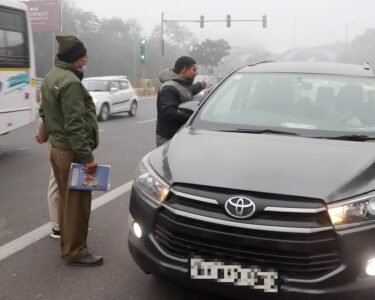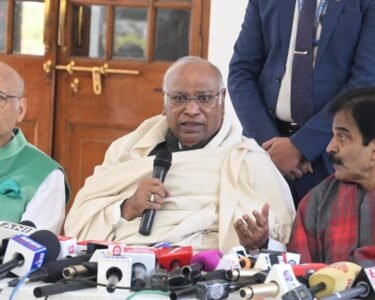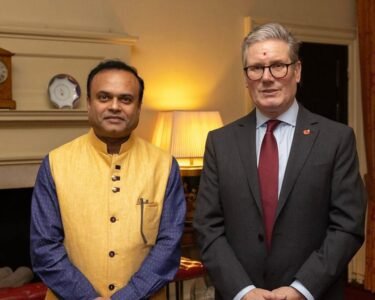New Delhi – In a devastating turn of events, a horrifying terrorist attack unfolded in Pahalgam, Jammu and Kashmir, leaving 28 tourists dead. The incident, which has sent shockwaves across the nation, occurred just a week after Pakistan’s Army Chief General Asim Munir stirred controversy by describing Kashmir as Pakistan’s “jugular vein.”
This brazen act of terrorism has raised suspicions of a coordinated provocation, with Indian intelligence agencies indicating that the statement by Munir may have served as a catalyst for the deadly assault.
General Munir’s Statement and Its Fallout
On April 16, during a high-profile address, General Asim Munir reignited tensions by reiterating Pakistan’s long-standing claim over Kashmir. “It was our jugular vein, it is our jugular vein. We will never abandon our Kashmiri brothers in their courageous resistance against the Indian occupation,” he declared.
Merely days later, The Resistance Front (TRF)—a known proxy group of the Pakistan-based Lashkar-e-Taiba (LeT)—executed one of the deadliest attacks in recent years. Intelligence officials suggest the timing and planning of the attack point to a broader, possibly premeditated agenda.
Chilling Details Emerge From Pahalgam Massacre
According to sources within security agencies, the attack took place after weeks of surveillance and strategic preparation. Around six heavily armed militants, supported by local operatives, targeted a group of tourists in the scenic Pahalgam area. Eyewitness accounts and survivor reports describe harrowing scenes, where the attackers allegedly forced victims to recite the “Kalma” (Islamic declaration of faith) to identify their religion. Those who could not were brutally executed.
Officials suspect Saifullah Kasuri, also known as Khalid—a senior Lashkar commander—as one of the masterminds behind the carnage. Another key suspect, Abu Musa from Rawalkot, has also drawn attention from intelligence sources. Musa had recently made incendiary remarks during a public gathering, vowing that “jihad will continue” in Kashmir and threatening further violence.
Possible Link to Broader Geopolitical Moves
The incident also coincides with several significant political developments, both domestic and international. At the time of the attack, U.S. Vice President JD Vance was in India on an official visit, underscoring the global implications of the situation. Domestically, the attack occurred shortly after the enactment of the Waqf Act, which sparked protests in certain regions, fueling communal tensions.
Indian agencies are exploring whether these overlapping events might have been used to strategically time the attack, in a bid to maximize psychological and political impact.
TRF and the Falcon Squad: A Growing Threat
Investigators believe that TRF’s Falcon Squad—an elite module trained for hit-and-run operations—was directly involved in planning and executing the Pahalgam ambush. Intelligence reports suggest this squad recruits extensively via online platforms, building a shadowy network of sympathizers and operatives.
These operatives often rely on Over Ground Workers (OGWs) to provide local support and intelligence, enabling them to carry out high-profile strikes while remaining largely undetected. Analysts believe that LeT’s top leadership is now issuing direct instructions for attacks in the Kashmir Valley, with the Falcon Squad acting as their execution arm.
Not an Intelligence Failure, Say Officials
Contrary to initial assumptions, security sources maintain that this was not a lapse in intelligence. In early April, specific warnings had emerged about militant reconnaissance activities in popular tourist zones like Pahalgam. “There were indications that hotels and public spaces were being surveyed by suspicious individuals. The attackers clearly waited for an opportune moment,” a senior official noted.
This calculated strategy, involving a mix of psychological warfare and cold-blooded violence, reflects a disturbing evolution in militant tactics.
Rising Tensions and Security Concerns
The brutal attack has reignited fears about the safety of civilians in the Valley and raised pressing questions about the involvement of foreign actors. While no official confirmation has been made linking the attack directly to Munir’s speech, experts believe the rhetoric served to embolden terrorist factions in the region.
Security forces have since launched a large-scale manhunt for the perpetrators and their local collaborators. Surveillance has been ramped up, with additional checkpoints and search operations being carried out across South Kashmir.
As the nation mourns the loss of innocent lives, the incident stands as a grim reminder of the volatile and ever-present threat posed by cross-border terrorism—and the need for continued vigilance and international cooperation to counter such dangers.







